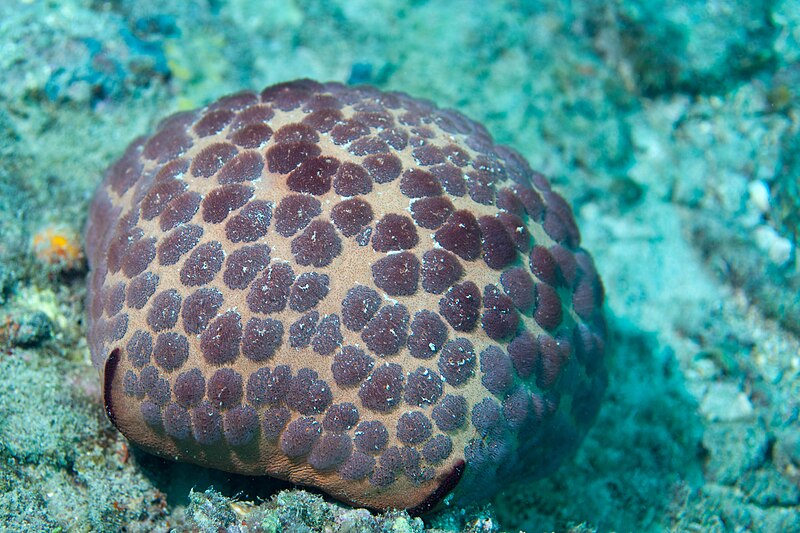 The adaptations developed in the waters of our world are some of the most amazing in existence. From bioluminescence to specialized mouths built to feed on certain foods, the fish and invertebrates living in Earth’s oceans, lakes and streams have some of the most unique traits found anywhere. What is even more interesting is how two life forms that are completely different and unrelated can develop a near identical solution for a problem.
The adaptations developed in the waters of our world are some of the most amazing in existence. From bioluminescence to specialized mouths built to feed on certain foods, the fish and invertebrates living in Earth’s oceans, lakes and streams have some of the most unique traits found anywhere. What is even more interesting is how two life forms that are completely different and unrelated can develop a near identical solution for a problem.
I have always been fascinated by the strange and the odd. From fish that mimic pieces of driftwood like the Chaca chaca to the lobe-finned and air-breathing Polypterus species, I have had the pleasure of keeping many unique fish species. Recently, I received an email from Frank Indiviglio that contained a link to some weird starfish. After reading it, I immediately saw a parallel to another article that I had read a couple of days earlier about a new fish from Lake Tanganyika.
The Little Round Starfish
In the article Frank sent, scientists did some pretty high tech work to discover that a little round disc, known as Xyloplax, found in the deep recesses of the oceans is actually a species of starfish. Doesn’t sound too amazing does it? I mean, a new starfish that has been discovered isn’t exactly groundbreaking science. This particular starfish, however, has no arms. Why would a starfish have no arms? Those arms are ususally the most identifiable thing about starfish, yet somewhere along the way this species developed realizing that arms were not necessary in its unique environment. This starfish lives in crevices and cracks of old sunken timbers on the ocean floor. Other starfish go through a stage in their life cycle where they have no arms, but Xyloplax remains armless in its mature stage. I guess you don’t need arms if you live in a crack!
The “Armless” Eel
 While I was reading the article about the armless starfish, I was reminded another article I had read about a new fish that was discovered in Africa’s Lake Tanganyika. Lake Tanganyika incredibly biodiverse, so the discovery of something new being found there is expected, but this new eel is pretty odd. There are several species of Mastacembelid eels found in the lake. Though length varies by species, each of these eels has a similar elongated and thin body shape, with a long snout used for probing rocks for small fish and invertebrates. This new species has decided to change it up a bit. Just like the starfish, Mastacembelus apectoralis lacks “arms” (pectoral fins) because of its habitat. This eel lives in the rocky zones of the lake and it can be speculated that darting in and out of the boulders is much easier if you don’t have fins that get in the way!
While I was reading the article about the armless starfish, I was reminded another article I had read about a new fish that was discovered in Africa’s Lake Tanganyika. Lake Tanganyika incredibly biodiverse, so the discovery of something new being found there is expected, but this new eel is pretty odd. There are several species of Mastacembelid eels found in the lake. Though length varies by species, each of these eels has a similar elongated and thin body shape, with a long snout used for probing rocks for small fish and invertebrates. This new species has decided to change it up a bit. Just like the starfish, Mastacembelus apectoralis lacks “arms” (pectoral fins) because of its habitat. This eel lives in the rocky zones of the lake and it can be speculated that darting in and out of the boulders is much easier if you don’t have fins that get in the way!
The two new species above are just a few of the many examples of how natural adaptations can be simple yet amazing. Whether you are speaking about mimicry, random similarities in design and function, or a singular unique adaptation, the animals of this planet continue to amaze scientists, hobbyists, and nature lovers alike. Think that the finless eel is cool? Check out its cousins the Fire Eel (Mastacembelus erythrotaenia), Tiretrack Eel (Mastacembelus favus), and Peacock Eel (Macrognathus siamensis). Interested in another strange starfish? Check out the Basket Star (Astrophyton muricatum) and its amazing arms. Has anyone out there read about another unique adaptation recently? Please feel free to share in the comments below.
Thanks,
Craig
Pillow Starfish image referenced from wikipedia and originally posted by Joi lto
Tiretrack Eel image referenced from wikipedia and originally posted by Adolsomee
 That Fish Blog – Aquarium Advice and Information
That Fish Blog – Aquarium Advice and Information

